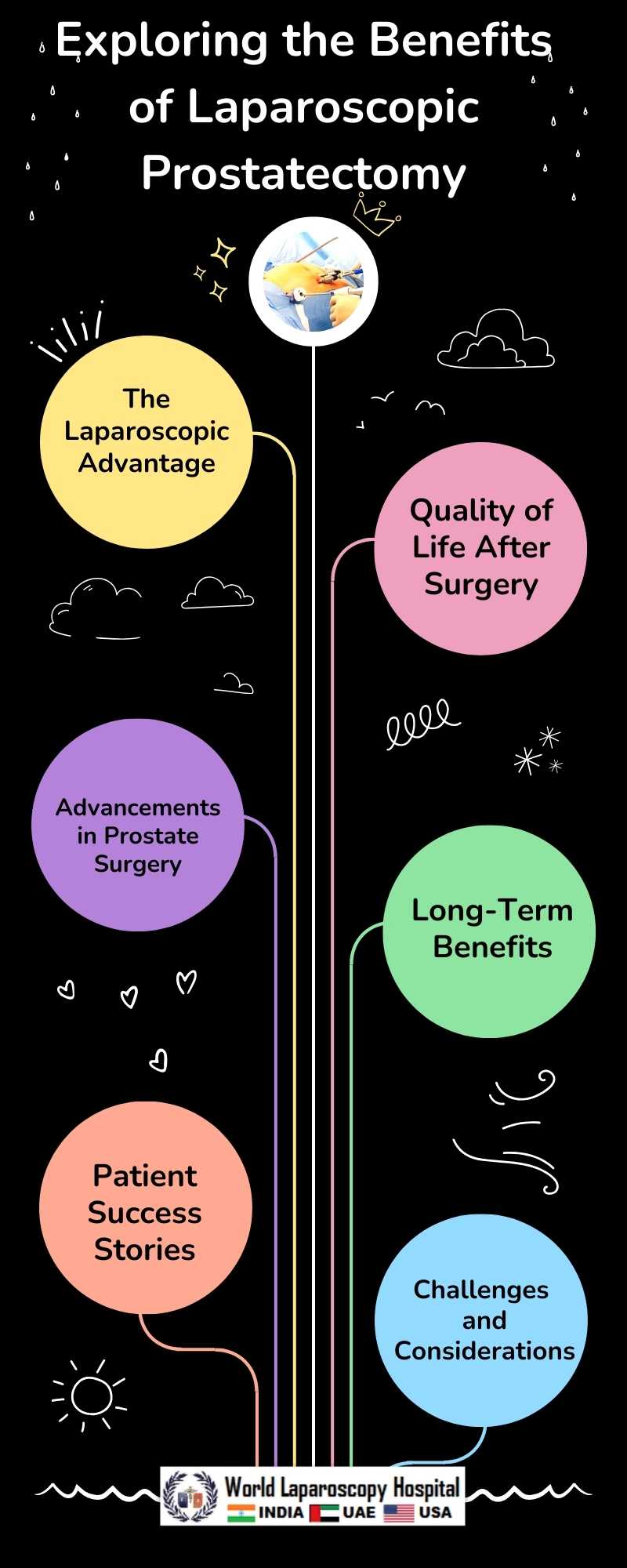Introduction:
Laparoscopic Prostatectomy: A Revolution in Prostate Surgery
Prostate cancer is one of the most common cancers affecting men worldwide. Traditionally, open surgery was the primary treatment option for prostate cancer. However, in recent decades, there has been a revolutionary shift towards minimally invasive techniques, with Laparoscopic Prostatectomy emerging as a game-changer. In this article, we will explore the numerous benefits of Laparoscopic Prostatectomy, a procedure that has transformed the landscape of prostate surgery.

I. Understanding Laparoscopic Prostatectomy
1.1 What Is Laparoscopic Prostatectomy?
- Definition and Overview
- Evolution of Laparoscopic Surgery
1.2 The Laparoscopic Approach
- Instruments and Technology
- Surgical Technique
II. Benefits of Laparoscopic Prostatectomy
2.1 Reduced Blood Loss
- Comparing Laparoscopic and Open Surgery
- Hemostasis in Laparoscopic Prostatectomy
2.2 Faster Recovery Times
- Postoperative Pain Management
- Hospital Stay and Return to Normal Activities
2.3 Smaller Incisions and Cosmetic Outcomes
- Cosmetic Benefits
- Lower Risk of Infection
2.4 Enhanced Precision and Visualization
- 3D Imaging and Magnification
- Nerve Sparing Techniques
III. Improved Quality of Life
3.1 Preserving Continence and Erectile Function
- Impact on Quality of Life
- Nerve-Sparing Approaches
3.2 Minimal Scarring and Discomfort
- Emotional Well-being
- Psychological Aspects
3.3 Lower Risk of Complications
- Comparing Complication Rates
- Long-Term Benefits
IV. Long-Term Outcomes and Survival Rates
4.1 Cancer Control and Survival Rates
- Cancer Recurrence Rates
- Long-Term Follow-Up Studies
4.2 Quality-Adjusted Life Years (QALYs)
- Quantifying Quality of Life
- QALYs in Laparoscopic Prostatectomy
V. Advancements in Laparoscopic Prostatectomy
5.1 Robot-Assisted Laparoscopic Prostatectomy
- Advantages and Disadvantages
- The Role of Robotics in Modern Surgery
5.2 Personalized Medicine in Prostate Cancer
- Tailoring Treatment to Patients
- Genetic Markers and Predictive Models
VI. Patient Stories and Testimonials
6.1 Real-Life Experiences
- Patient Interviews
- Personal Journeys
VII. Challenges and Considerations
7.1 Learning Curve for Surgeons
- Training and Skill Development
- Ensuring Competence
7.2 Access and Affordability
- Healthcare Disparities
- Insurance Coverage
Conclusion:
Laparoscopic Prostatectomy has revolutionized the treatment of prostate cancer, offering patients a multitude of benefits, including reduced blood loss, faster recovery times, and improved quality of life. With advancements in technology and surgical techniques, the future looks promising for this minimally invasive approach. However, it is essential to address challenges related to surgeon training, access to care, and affordability to ensure that more men can benefit from this life-changing procedure. As we continue to explore the benefits of Laparoscopic Prostatectomy, it is clear that it has already left an indelible mark on the field of prostate surgery, offering hope and improved outcomes for countless patients.